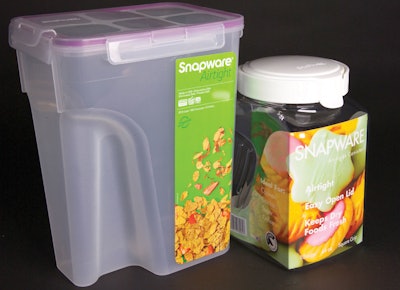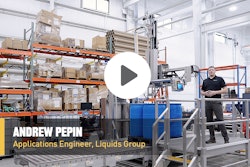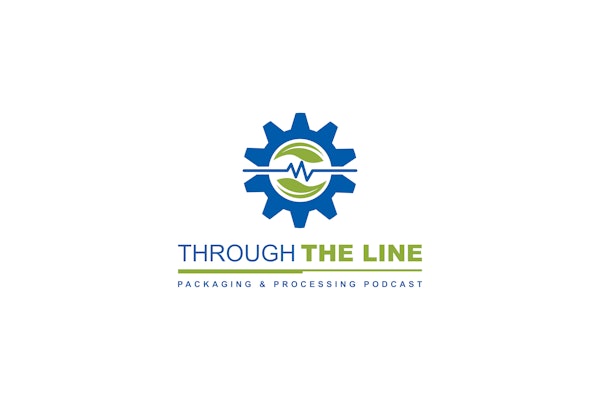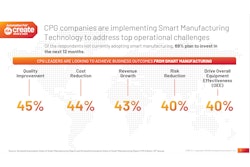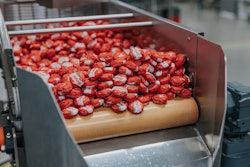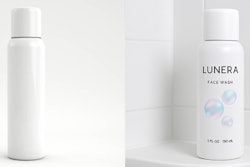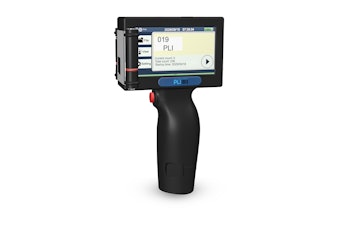For Snapware Corp., Mira Loma, CA, double-digit growth throughout the past six years has been more than a stroke of luck. A fully integrated manufacturer of plastic storage containers, from raw materials to finished parts, Snapware values efficiency and automation, employing the continuous improvement philosophy of Kaizen in everything the company does.
When the volume demand picked up for its Snapware storage containers in early 2010, the company decided it made sense from an ROI standpoint to minimize variability and automate the labeling process.
Snapware had been using commercially printed offset inserts, placed inside the containers, as the primary means of branding its products at the shelf of mass merchandisers like Bed Bath & Beyond, Kohl’s, and Target. The cost to produce the inserts, combined with the manual labor required to put them inside the containers, did not fit the company’s long-term goals.
Having used labels on a small scale in the past, Snapware saw a cost savings in a large-scale changeover to applying labels directly onto all of its containers, in place of inserts. The company turned to label converter WS Packaging Group (www.wspackaging.com) for a solution to incorporate automated labeling systems into six of the injection-molding lines at its 170,000-sq-ft manufacturing facility.
“By fully mechanizing our labeling system, we could increase efficiency, drive out waste, and eliminate a lot of variability, which would improve the quality look of our products,” says Ken Tran, COO of Snapware at the time of the project. “To take it a step further, we were committed to investing in the right equipment and aligning ourselves with the right supplier that could provide a fully integrated solution.”
Material decisions
Snapware turned to WS Packaging to provide the expertise to bring the idea of automation to fruition, starting with new labeling for its line of Airtight food-storage containers.
WS Packaging quickly got to work on the project after Snapware asked the company in April 2010 to provide full system application solutions for six machines in the time frame of one month—approximately half the time it normally takes for a project of this scope. The project required producing the labels and manufacturing the custom equipment needed to apply them. Says Tim Newberry, product specialist manager with WS Packaging Group’s Automated Systems Division (ASD), “We are the original equipment manufacturer, so we had to procure the parts, and specify and build the six machines within that one-month time frame.”
Explains Tran of the need for speed, “Because we were in the process of changing the look and feel of our packaging, we needed everything to happen very quickly. Having WS Packaging make both the labels and the application equipment felt really good, from an integration standpoint, because they had full accountability in the entire process.”
Determining the appropriate label material was the first step in the process and was the key to the whole application. Snapware wanted an automated system that would seamlessly apply labels to the outer side panel of the containers during the production process. The materials had to be temperature-resistant to withstand application to hot containers coming out of the injection-molding system to prevent wrinkling. Equally important, the labels had to provide brand impact on shelf, as well as be easily and cleanly removable by consumers after purchase.
WS Packaging tested a variety of label materials before selecting two different Fasson® brand pressure-sensitive label materials from Avery Dennison to fulfill the application requirements for the range of label and container sizes. One material could not do it all. They first chose a white, semi-gloss paper with removable adhesive, which they printed in four-color process, plus three spot colors on the front of the label and one spot color on the adhesive side, with a 1-mil clear overlaminate to protect and add visual appeal to the label.
The second material was a white, gloss p-s paper, with an ultra-removable adhesive, which WS Packaging printed in four-color process, plus three spot colors on the front of the label and one spot color on the adhesive side, and a propriety varnish to match the other labels that have an overlaminate.
For the initial Airtight label run, WS Packaging produced more than 100,000 labels from both materials, including seven different-sized labels for a total of 12 separate SKUs. They printed the labels on a 10-in., 14-color Mark Andy flexo press at their facility in Fullerton, CA, located just a few miles from the Snapware manufacturing facility.
Rebranding for maximum impact
In the transition from inserts to p-s labels, Snapware decided to rebrand its Airtight product line with the help of JDK Design. WS Packaging worked closely with the Snapware marketing team and JDK early in the development process to maximize the visual impact of the labels and ensure the design would be consistently produced with the capabilities of flexo printing.
“Sometimes designers can create things that are so challenging to print that it’s nearly impossible to achieve the same look again in subsequent runs,” says Graham Rushall, senior account executive for WS Packaging. “We wanted to avoid that here by making sure they understood the printing process and its parameters right from the get-go.”
The team completed a series of test runs to verify that the expectations of all parties were met, which led to optimal press runs for the labels. The new labels were launched in June 2010.
“We’ve had nothing but a great response to the new look and feel of the labels,” says Tran. “The use of color blocking on our product line makes the labels eye-catching and impactful on the retail shelf.”
Customized, easy-to-change equipment
While the label production progressed, the Automated Systems Division, located in Mason, OH, worked on developing the custom-built label application equipment and determining how it would integrate with Snapware’s manufacturing lines. Each label applicator had to be adaptable to the different size containers being produced and, therefore, needed to be capable of running a variety of label sizes, ranging from 7⁄8 x 2 in. to 9 x 3 in. Ultimately, three labelers were designed to accommodate labels up to 6 in. high, while three others handle labels up to 9 in. high.
“We worked closely with the Snapware engineers to meet their specifications and ensure there was a smooth integration between our equipment and their injection-molding machines,” says Newberry. “We build labeling systems from the bolt on up. Fortunately, we have good relationships with our suppliers, and we were able to do some advance engineering work so we could order parts right when the equipment order came in.”
The full label application system provided by WS Packaging includes an ASD-50 side-panel roll-on label applicator with an electrical enclosure with operator interface, a support stand with vertical and horizontal lead-screw positioners, a product-detection sensor, a 6-ft-long conveyor, and a top-trap overhead conveyor. WS Packaging also outfitted each labeling machine with rubberized casters to enable Snapware to move the equipment from line-to-line, where needed.
The conveyor systems are also designed to accommodate those products that are stacked by robotic arms after exiting the injection-molding machine. The Allen-Bradley (www.ab.com) PLC-controlled system halts the conveyor while products are stacked, and then resumes movement once the stacking is complete, labeling the side panel of the bottom container in the stack.
The ASD-50 system is capable of speeds to 120 products/min, but Snapware is limited by the speed of the injection-molding machine to 12/min. Changeover of the label applicator is a 15-min process, comprising a change in the machine’s peel tip for the new label.
Collaboration throughout
“It’s been a true partnership throughout the entire process,” Rushall says. “From start to finish, our label manufacturing plant and Automated Systems Division worked together with the Snapware maintenance, operations, quality assurance, and marketing teams to fully understand and meet the expectations Snapware had for our equipment and final label products.”
“The equipment and labels have been very consistent and reliable,” Tran confirms. “We needed to be sure we had a quality label on a quality product. We could not afford a crooked label on our product because it would cheapen it.
“When you look at our products on shelf now, the labels are nice and straight. This is certainly in keeping with the quality perception of our brand.”
Satisfied with the Airtight labeling application system, Snapware expanded the use of the equipment to its Mods product line two weeks after the Airtight label rollout and switched to p-s labeling for its Smart Store product line two weeks later, in July 2010.
“WS Packaging did a wonderful job of getting the labels and machinery here on time, training our people throughout the entire process, and following up with us after the equipment installation,” Trans concludes. “We’ve found having a fully integrated packaging supplier to be a big plus.”
